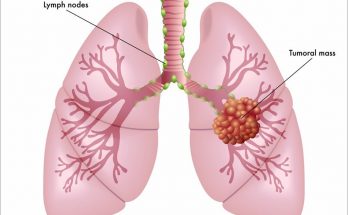COPD, or chronic obstructive pulmonary disease, is a serious lung disease that is the fourth leading cause of death in the United States.
The severity of COPD is measured in four stages, based primarily upon a pulmonary function test (PFT) called spirometry.
What is a Pulmonary Function Test?
A pulmonary function test is a simple breathing test that is used to measure the functionality of the lungs. A spirometer is the device that measures both the flow and volume of air that enters and leaves the lungs; a computer interprets the data collected by the spirometer in relation to your gender, age, height, and ethnicity. Spirometry is used to diagnose and monitor COPD. The test itself is painless, but requires the full cooperation of the patient in order to achieve accurate results. Basically, the patient will blow into a mouthpiece as if attempting to blow out the candles on a birthday cake so that measurements can be taken. Spirometry or pulmonary function tests are the standard by which COPD severity is measured and “staged”.
Four Stages of COPD
Based on results of the pulmonary function test, COPD stages are determined as follows:
- Stage I COPD. Stage one is referred to as ‘at risk for COPD’, and is characterized by some minimal shortness of breath (dyspnea). Cough and/or cough with sputum may be present. Most people with Stage I COPD do not realize that their lungs are functioning abnormally. 80% or better on PFT.
- Stage II COPD. Stage two is referred to as ‘mild COPD’, and is characterized by moderate to severe shortness of breath during physical exertion. Cough and/or cough with sputum may be present. Most COPD is first recognized when it is in its second stage, usually when the patient seeks out medical help for respiratory conditions or symptoms. 50-80% on PFT.
- Stage III COPD. Stage three is referred to as ‘moderate COPD’, and is characterized by severe shortness of breath. Cough and/or cough with sputum may be present. By stage three, COPD sufferers have experienced a decline in the quality of life, may be fatigued often, and rarely exercise because the exertion is too much for their weak lungs. 30-50% on PFT.
- Stage IV COPD. Stage four is referred to as ’severe’, and is characterized by a marked decrease in the quality of life because of dyspnea. Stage four sufferers of COPD face life threatening exacerbations (flare-ups). Less than 20% on PFT.
Understanding COPD Stages
Many people are confused when they are told that they have a certain stage of COPD. As a COPD sufferer, you need to understand your lung function tests so that you can become an active participant in your treatment and COPD management plan. Most patients don’t understand their results. Based on the normal predicted results of your breathing test, your doctor can calculate the functionality of your lungs. For instance, if a healthy person of your age, height, and ethnicity blows out two liters of air during a spirometry session, but you blow only one liter, then your lung function is one half of the normal predicted functioning, or 50%, which indicates that your lungs are diseased and functioning abnormally. While no one past the age of 35 usually “blows” a 100% breathing function test, the amount that you “blow” is a useful figure in determining the COPD stage that your lungs are functioning in.
Treatment for COPD
The treatment for COPD is based on the severity of the disease, the overall health of the COPD sufferer, and the COPD stage that is present. First and foremost, smoking cessation is required of the COPD patient, as the number one treatment goal for COPD is prevention of further damage to the lungs. In addition, COPD treatment involves alleviation of COPD symptoms, improvement of daily activities and enhancement of quality of life. The COPD patient will also take medications that are used to dilate the airways (also known as bronchodilators) and decrease the inflammation of the airways, be vaccinated to prevent influenza and pneumonia and receive supplementation of oxygen. Depending on the COPD stage, pulmonary rehabilitation is also attempted in many COPD patients.
